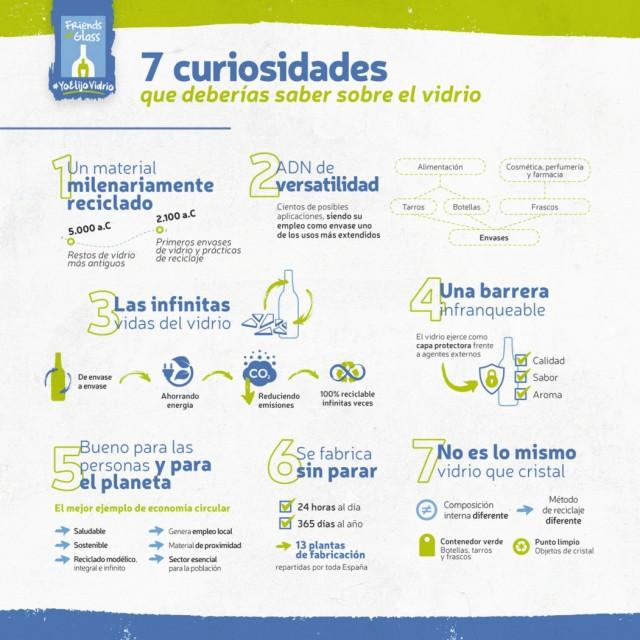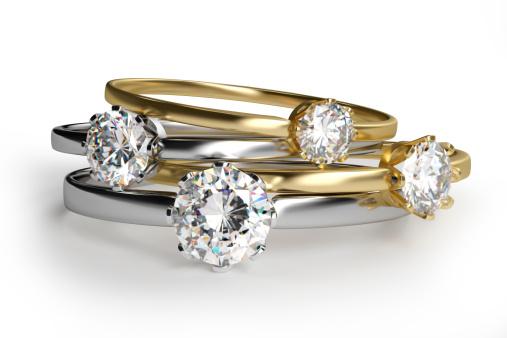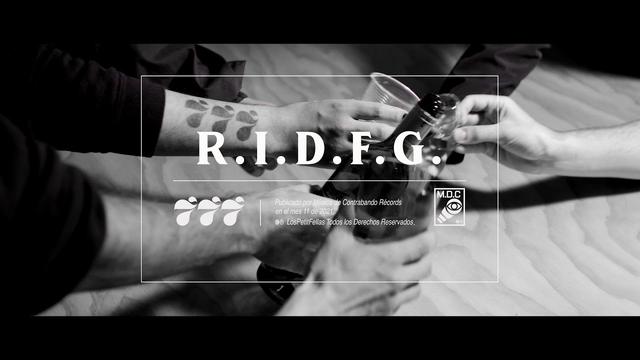Glass is a packaging material that is part of our day to day, both in the most everyday moments, opening the jar of jam at breakfast, and in those celebration, when we decorchas a bottle to provide together.However, that familiarity linked to one of its most notable characteristics, transparency, makes it often unnoticed.
Therefore, the consumer platform in favor of the choice and the recycling of glass containers, Friends of Glass, wants to share 7 curious data that bring us even more to this material, revealing peculiarities that make it a unique, healthy andsustainable.
Millennially recycled
With an age greater than that of Giza's pyramids, experts suggest that the glass was first used around 5.000 a.C.In Mesopotamia, where material applications have been found to cover ceramic objects.The first glass manufactured containers were found in Egypt and date from the period of 2.100 a.C.In addition, it has been shown that at that time there was already an entrenched recycling practice, having found tiny colored fragments that are known that in the 18th century a.C.They were sent to the windows of the stained glass in the cities of Sidon and Shot, the current Lebanon, where there was a prosperous glass industry.
At present, in Spain, we can all recycle glass through the green container, commonly called Iglús.Did you know that the first one settled in the Moratalaz neighborhood (Madrid) in 1982?Years before industries were forced by law to recycle, the glass had already launched their own initiative.
With versatile DNA
The glass has a series of qualities that make it a very versatile material and innumerable applications.It is inert, rigid and fragile at the same time, amorphous and transparent.All these characteristics, in combination with the ingenuity and creativity of the human being, make it possible in all types of industries, and in areas as diverse as art and building.Glass takes different forms: glass wool, flat glass, hollow glass...And it has so many applications that has been essential in the development of technology, biomedicine, astrophysics, solar energy or telecommunications.
Its use as a container is one of the most widespread uses, but...Did you know that glass containers have different names according to their content?They are called jars when they are for food, bottles when they contain liquids and bottles when they are perfume, pharmacy or cosmetics containers.

It is recycled infinite times
The glass is created from natural, sustainable and abundant raw material (silica sand, sodium and limestone carbonate) but, currently, its main ingredient is recycled glass, since it is a material that does not degrade during therecycling process, being able to repeat infinite times, without loss of quality or quantity, and to become what it was, an apt and safe container for food and drinks.In this way, in a closed and infinite circuit, waste generation is avoided, while saving energy and carbon emissions are reduced.
Glass is never garbage, it is an inexhaustible resource when recycled, which more than replaces raw materials, in fact...Did you know that by recycling 1 ton of glass, 1.2 tons of raw material are saved?
#agreement How to Write an Agreement Between Two Parties? https://t.CO/JAI1NSFODS
— Ansari Mohamed Sat Apr 07 04:52:27 +0000 2018
An impassable barrier
It is a pure material that retains the original qualities of its content and protects it against external agents.The glass is waterproof, hermetic and does not oxidize.Glass containers do not need internal layers (varnishes, plastics...) To be in direct contact with food or drinks.Glass is inert, that is, there is no risk that harmful chemicals or its environment or its surroundings are free, it is free of pollutants and erodes like any rock, without affecting the food chain.In fact, the glass is the only container that has received the GRAS label (generally recognized as insurance) by the FDA (Food and Drug Administration) of the United States.
Have you ever wondered what the glass knows or smells?To nothing!That is why it is used to make tastings, since it does not affect the aroma or taste, and it is also the material chosen in laboratories, not altering the samples.
The best example of sustainability
Nature shows us the best example of sustainability, acting through closed cycles that ensure their development over time, without exhausting resources and preserving the future.The circular economy aims to imitate this cycle, taking care of nature, and creating wealth and employment.The glass container is a magnificent example of circular economy: it has a model, integral and infinite recycling;Its industry generates local, stable and quality employment throughout Spain;And it is a proximity material, the providers of raw material, the manufacture, the distribution the packaging...Almost all stages until a container reaches the consumer is done thanks to the network of local companies that work for and for glass.
Did you also know that the glass container industry is an essential sector?During the crisis caused by the COVID-19, the glass industry and its workers were not stopped.Glass containers are part of the food chain, without the necessary supply of bottles and jars, food and beverage companies could not proceed with the packaging of their productions.
They are manufactured without stopping
The glass is created by melting raw materials in large furnaces at a temperature close to 1.000º Celsius.This molten glass is cut into drops of a weight equal to that of the container and distributed to the different molds, where through a series of pressure and emptiness processes, the new containers are shaped.These ovens work 24 hours a day, 365 days a year, during their 12 or 15 years of useful life.
Did you know that in Spain about 19 million bottles and jars are manufactured daily?The glass packaging industry has 13 manufacturing plants distributed throughout the Spanish geography.
It is not the same glass as crystal
Although they may seem the same, they are not.The crystals are created by nature from the crystallization of pressure gases in the inner wall of rock cavities, on the other hand, what is manufactured mainly merging silica sand, is glass.There are, however, glass created by nature following the same procedure: such as obsidian or volcanic glass, which is formed by the heat generated inside the volcanoes;or the brightly, which is the result of the fall of lightning in the sand.At present, some glasses are added to certain metals, such as lead, so that their properties in terms of brightness, sound and weight are very similar to those of the crystals.This is the case of dishes (glasses, glasses...), although it is glass we call it glass.
Therefore, although they are similar, their composition is different, and they are not recycled the same.Did you know that only glass containers should be deposited in the green container: bottles, jars and bottles?While other glass or crystals must move them to a clean point for their specific recycling process.




